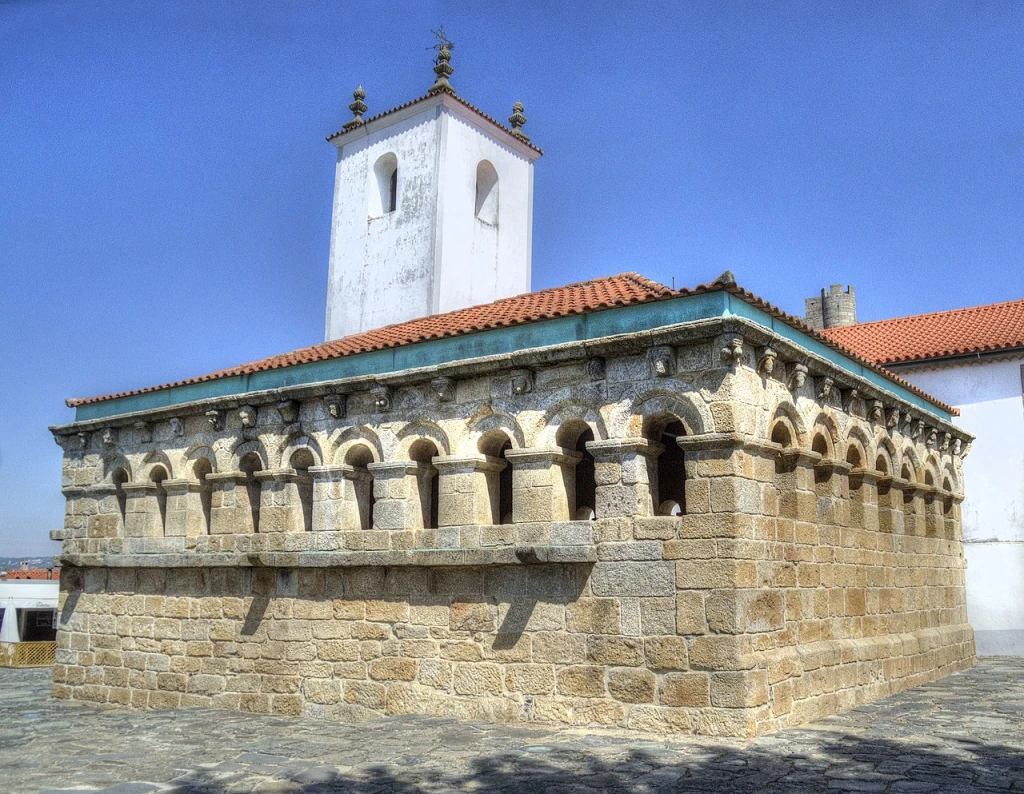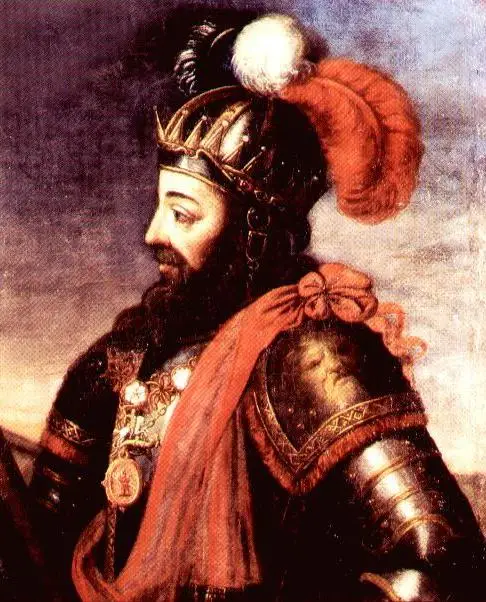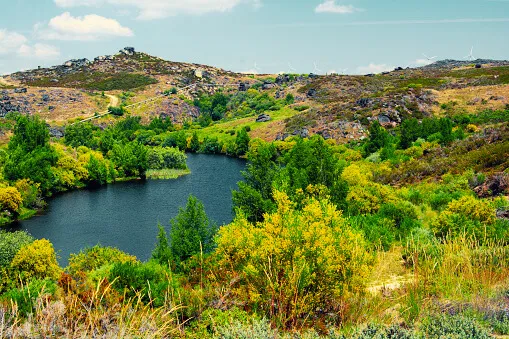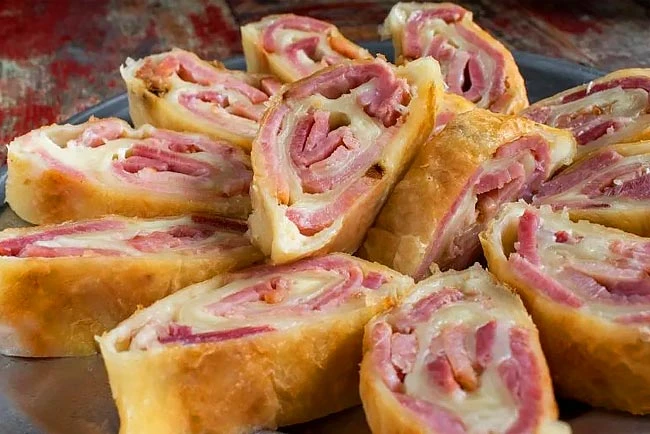Bragança, located in northern Portugal, known for its Medieval castle, rich history, Montesinho Natural Park, traditional cuisine, Transmontano Museum, and vibrant festivals.
Introduction
Bragança, also known as Braganza in English, is a city and municipality located in northeastern Portugal. Situated on a branch of the Sabor River in the Culebra Mountains, it is approximately 170 km northeast of Porto and shares a border with Spain.
History of Braganca
Archaeological evidence reveals human settlements in Braganca region during the Paleolithic and Neolithic periods. In the Neolithic era, communities focused on farming, domesticating animals, and had a budding religious belief. Numerous remnants of these ancient societies have been found, including rock carvings of ceramics, agricultural tools, arrowheads, and modest jewelry. Many of these artifacts were discovered in burial mounds and megalithic structures scattered throughout the area. During the late Roman colonization, changes occurred, such as the establishment of private property and a shift away from forests. Excavations have unearthed evidence of Luso-Roman castro societies, including funerary remains, coins, and tools.
The region was dominated by the Zoelae and Baniense ethnic communities. The Roman presence in the area can be traced through various settlements and trade routes. The Suebic and Visigothic kingdoms left limited records, indicating the advancement of rural agrarian and pastoral communities. Some surviving place names from that period include Gimonde, Guadramil, and Samil.
Medieval Period
During the medieval period, the influence of Islamic civilization in the northern regions and Douro was limited. Only one mention of a Count of Bragança named Pelagius exists from the Council of Oviedo in 970. The region quickly became part of the Kingdom of Asturias (later León) due to the Reconquista, leading to significant influences in various aspects.
The Bragançãos family, from Castro d’Avelãs, controlled Bragança in the 11th and 12th centuries. The abbot Mendo Alãm, who later married Princess Ardzrouri of Armenia, established a hereditary line. Legend says Fernão Mendes, a Braganção, married Sancha, daughter of Afonso Henriques and Teresa, and defended the region. They rebuilt the ancient village, and Fernão Mendes became known as the Brave for his valor in the Battle of Ourique. However, as they had no heirs, the region eventually became property of the Crown. The Bragançãos played a crucial role in defending the region against León and Castile.
The city of Bragança likely developed from a Romanized castro in the 10th or 11th century. Its strategic importance for military control and access was reinforced by administrative institutions established by the King. The city received a foral in 1187, signifying its significance as the first town in Trás-os-Montes. Monarchs granted privileges to attract settlers to the northern frontier, including the establishment of annual fairs and free-trade policies.
Wars with Castile during the 14th century resulted in the destruction of frontier settlements, including Bragança. Devastation, famine, epidemics, and high infant mortality rates caused a significant population decline. The Treaty of Babe in 1387 recognized John I’s title and rights to Portugal and the Algarve. In 1396, John returned to Bragança to defend against Castilian aggression, strengthening the border and castle defenses. He also secured ties between the frontier region and the Crown through a marriage alliance.


Monarchy in Kingdom of Portugal
In the 13th century, Bragança was divided into four parishes. In 1442, King Afonso V of Portugal established the hereditary dukedom of the Duchy of Braganza for his uncle, becoming one of the oldest fiefdoms in Portugal. The second Duke, Fernando, expanded his territory and supported the king during North African campaigns. He elevated Bragança to the status of a city but later faced conspiracies and intrigues that resulted in the banning of the House of Braganza. The lands remained with the Crown until Ferdinand of Portugal offered them as a dowry to João Afonso Pimentel.
In 1496, King Manuel I reinstated the Braganzas but forced them to expel Jews from Bragança, causing many inhabitants to leave. In the following centuries, there were renovations and remodeling to churches, convents, and noble estates. Industrialization and commercialization grew rapidly, thanks to Jews who escaped the Inquisition and stimulated markets in the region.
Portugal regained its independence from Spain in 1640, allowing the 8th Duke of Braganza to become King John IV. From 1640 to 1910, the House of Braganza provided Portugal with its kings. However, in the 18th century, Bragança faced crises associated with industrialization, and agriculture problems arose in the 19th century. The region’s economy has since experienced fluctuations stimulated by national initiatives. The feudal castle of the dukes, built in 1187, still stands.
Present Day in 21st Century
In terms of economic activities, Bragança serves as an agricultural trade center, particularly for products such as wine, olive oil, grains, and livestock. There is also some manufacturing, primarily in the textile industry. The city attracts many tourists each year with its centuries-old Ash Wednesday celebration. Bragança is well-connected to Porto through rail and paved road networks. The surrounding area of the city is predominantly mountainous, and it is known for its mining of high-grade iron ore.
Population of Braganca
As of the 2023 estimate, the city had a population of around 34,628.
Map of Bragança
Getting to the City
There are several transportation options for reaching Bragança, Portugal. Here are some alternatives:
- By car: If you have your own vehicle, you can drive to Bragança by taking the A4 highway from Porto. The duration of the journey is approximately 2.5 hours, depending on traffic conditions.
- By bus: Rede Expressos, a bus company, operates several daily buses from Porto to Bragança. The bus journey typically takes around 3 hours.
- By train: Bragança has a train station, but there are no direct trains from Porto. To reach the city by train, you can take a train from Porto to either Mirandela or Pocinho and then transfer to a connecting train to Bragança. The total travel time is approximately 4 hours.
- By air: The nearest airport to Bragança is Porto Airport. From there, you can rent a car or take a bus to Bragança. The car journey takes around 2.5 hours, while the bus journey takes approximately 3 hours.
Where to Stay
Top Picks for Hotels
- Candeias do Souto
- Moinho da Ponte Velha
- Pousada de Bragança – Sao Bartolomeu
- Baixa Hotel
- Montesinho Eco-Resort
Cheapest Options for Hotels
- Alojamento Local do Arado
- Inn Door 21 – Hostel & Suite
- Casa Luís Gonzaga
- Baixa Hotel
- Micro Cabana Rotativa
Book a room in one of these cheap options from
Popular tourist attractions
- Bragança Castle: This medieval castle dominates the city’s skyline and serves as a top tourist attraction. Built in the 12th century, the castle features impressive walls, towers, and battlements, offering panoramic views of the surrounding landscape.

Braganca Castle. - Domus Municipalis Archaeological Site: The ruins of this historical site were discovered in 1991 during excavations carried out in front of Bragança Castle. Visitors can explore the remains of the 12th-century building and learn about its fascinating history.
- Iberian Wolf Recovery Centre: Located just outside of the city, this center focuses on the preservation of the Iberian Wolf. Visitors can learn about the wolves’ biology, behavior, and the conservation efforts dedicated to protecting this endangered species. Guided tours provide an opportunity to observe the wolves up close.
- Fernão de Magalhães Museum: Dedicated to the life and achievements of Fernão de Magalhães, a Portuguese explorer and sailor, this museum showcases his epic voyage around the world and his role in discovering the Spice Islands. Exhibits include maps, models, and artifacts from the 16th century.

Blue Lake in Summer landscape at Montesinho Natural Park. Rebecca E Marvil - Montesinho Natural Park: The city is situated in the heart of the Montesinho Natural Park, one of Portugal’s largest protected areas. The park offers a range of outdoor activities, including hiking, cycling, and birdwatching. Visitors can also explore traditional villages within the park and sample local cuisine.
- Transmontano Museum: This amaying museum of Bragança showcases the rich cultural heritage of the region, preserving and displaying its history in an engaging way.
When to Visit
The best time to visit Bragança, Portugal is during the months of May, June, September, and October. During these months, the weather is pleasantly warm but not excessively hot, and the crowds are relatively smaller. On the other hand, July and August are considered the high season, characterized by more significant crowds and hotter temperatures. If you prefer cooler weather and don’t mind the crowds and higher prices, December and January can be enjoyable times to visit due to the Christmas and New Year festivities.
Typical foods in Bragança
Here are some typical foods from the city:
- Posta à Mirandesa: This grilled steak is made from the meat of the Mirandesa cow, a native breed raised in the region. It is usually served with potatoes and vegetables.
- Folar de Chaves: A sweet bread made with eggs, sugar, and cinnamon, often filled with ham or chorizo. It is traditionally enjoyed during Easter celebrations.
- Alheira de Mirandela: A sausage made with bread, poultry, and spices. It is commonly served fried with french fries, rice, or vegetables.
- Bola de Carne: A savory meat pastry made with dough and filled with a mixture of ground beef, pork, and spices. It is a popular snack or appetizer.

Bola de Carne, Popular food in Braganca - Azeite de Trás-os-Montes: This olive oil is produced in the Trás-os-Montes region, which includes Bragança. It possesses a distinctive flavor and is often used in local dishes.

